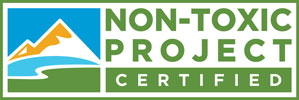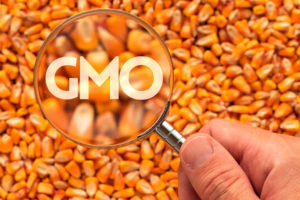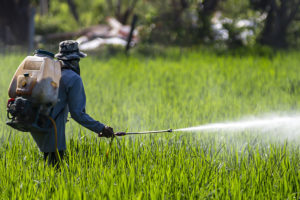Organic Certification Does Not Guarantee Non-Toxic Products
Caitlin Beale, MS, RDN
As consumers become more concerned about their health and the environment, the demand for the organic certification grows. In 2018 the sale of organic products (both food and household goods) reached a record sale of $52.5 billion, up 6% from 2017 (1). Many families are facilitating the growth of the organic food industry, citing reasons such as increased transparency and integrity, as well as avoiding exposure to genetically modified (GMO) foods and pesticides (2). A consumer health report found that 39% of surveyed parents who purchased organic packaged foods for their children did so to avoid heavy metals (3).
While it is true that organic products reduce your risk of exposure to toxic pesticides and GMOs, these products are not immune to contamination from toxins such as heavy metals. If consumers are choosing organic to improve their health and advocate for transparency in labeling, it’s essential to understand the limitations behind the organic label.
Organic Certification: What does organic mean?
If a food or product is labeled certified organic, it means that all parts of the supply chain – from growth in the field to production – is done without synthetic pesticides or fertilizer, GMOs, antibiotics, artificial ingredients or colors, or irradiation (4).
If a food label states that a product is “made with organic ingredients,” at least 70% of the ingredients must follow organic guidelines. However, the remaining ingredients can still include non-organic items such as GMOs. The USDA oversees organic certification, inspecting farms, and facilities annually for recertification (5).
Does the organic label address other toxins?
Unfortunately, the certified organic label does not indicate that the product is free from heavy metals and other contaminants. There appears to be no difference between conventional and organic foods with regard to heavy metal contamination (6). The main reason? Heavy metals contaminate soil and water – independently of whether the product is from an organic or conventional farm.
Heavy metals are naturally occurring, but human activities have polluted the land and water. While organic farms do not use additional toxic pesticides, the crops absorb the metals from the soil and the water. Some plants, such as rice are especially efficient at absorbing metals from the ground.
Contamination can also occur during production or packaging. In addition to heavy metal contamination, bacterial contamination can also occur during these processes from poor personal hygiene practices or contaminated soil and water.
Organic Certification: What toxins are found in organic products?
In recent years the magnitude of this problem has been highlighted through third-party independent testing. Several separate reports have verified toxic contaminants in certified organic products.
Arsenic, lead, and cadmium are just a few of the heavy metals found in food and supplements. These metals cause a range of severe health issues, including increased risks of cancer, cardiovascular disease, diabetes, and reproductive problems (7).
Recent studies on both conventional and organic rice found dangerously high levels of arsenic in many products. The report states that conventional and organically grown rice products tested for high levels of arsenic (8). California grown rice had significantly less inorganic arsenic than rice grown in other parts of the country.
Another study conducted by Consumer Reports discovered high levels of arsenic in many juices. The authors again clearly state that there was no difference in contamination between organic and conventional juices. Rice and juice contaminated with arsenic are especially concerning as the products tend to be targeted towards children – including rice baby cereal (9).
The same Consumer Reports study cited above also found lead in a high number of organic fruit juices. There is no established safe level of lead exposure, making any contamination dangerous, especially to infants and children (10). Lead was also found in organic baby food in concerning amounts (11).
An independent study conducted on popular protein powders also found lead in many of the samples. The authors noted that on average certified organic products had twice the levels of heavy metals than non-organic samples, likely because the organic products were plant-based, and the metals were absorbed from the soil (12).
Similar results were noted in a recent paper published in 2019 that examined infant formula and baby food. The study authors concluded that out of 471 baby food samples, lead was detected in 37%, and cadmium was found in 57% of the samples. Whether the numbers exceeded safe amounts depended on the various guidelines available. The FDA, California’s Proposition 65, and the World Health Organization all have differing guidelines. Regardless, the presence of these metals is concerning. The authors again noted there was no difference between certified organic products as compared to conventional (13).
A study conducted in 2013 examined bone broth made from organic chicken and found potentially unsafe levels of lead in the broth, citing a need for nutritionists and physicians to balance the risk-benefit of adding bone broth as a healing food (14). Heavy metals have also been found in many supplements, regardless of organic verification (15).
Is organic still beneficial for our health?
While choosing organic does not guarantee non-toxic, the short answer is yes, it is worth it to buy organic products.
There are many reasons to choose organic products, including:
- Certain organic produce, such as tomatoes, potatoes, peaches, and apples, all appear to have higher levels of anti-inflammatory polyphenols compared to conventional produce (16).
- A literature review of 343 peer-reviewed articles found that on average organic food has higher amounts of antioxidants. This review also found that while still present, organic food may have lower levels of cadmium (17).
- Children’s health. Children who consume organic produce have lower urinary pesticide levels than those who rely on a conventional diet (18). Several studies suggest that certain pesticides adversely affect cognitive development in children (19)
- Eating organic meat decreases the risks of antibiotic resistance and exposure in the food supply (20).
- Choosing organic reduces the risk of exposure to harmful pesticides such as glyphosate as well as GMOs.
- Sustainable practices. Choosing organic is a vote for environmental sustainability, supporting the health of the earth, the farmers, and the public.
Unfortunately, organic does not always mean non-toxic as our soil and water are often contaminated.
Consumers who purchase organic products are often under the impression that the food is safe, but as the above research suggests that’s not always the case.
While some individual states such as California have an additional label and testing requirements, there is little oversight for toxic contamination through the USDA beyond the current organic standards.
Purchasing organic products will continue to be an important part of toxic burden reduction, but awareness and further testing beyond the organic certification may be warranted to further the cause.
References:
- “U.S. Organic Sales Breakthrough $50 Billion Mark in 2018 .” OTA, 17 May 2019, ota.com/news/press-releases/20699.
- “Organic Industry Survey.” OTA, ota.com/resources/organic-industry-survey.
- Hirsch, Jesse. “Heavy Metals in Baby Food: What You Need to Know.” Consumer Reports, consumerreports.org/food-safety/heavy-metals-in-baby-food/.
- “Organic 101.” OTA, ota.com/organic101.
- McEvoy, Miles, et al. “Organic 101: What the USDA Organic Label Means.” USDA, 13 Mar. 2019, usda.gov/media/blog/2012/03/22/organic-101-what-usda-organic-label-means.
- Magkos, Faidon. “Organic Food: Buying More Safety or Just Peace of Mind? A Critical Review of the Literature.” Taylor & Francis, tandfonline.com/doi/full/10.1080/10408690490911846.
- “Arsenic.” World Health Organization, World Health Organization, who.int/news-room/fact-sheets/detail/arsenic.
- Consumer Reports. “How Much Arsenic Is in Your Rice?” Consumer Reports, consumerreports.org/cro/magazine/2015/01/how-much-arsenic-is-in-your-rice/index.htm.
- Hirsch, Jesse. “Arsenic and Lead Are in Your Fruit Juice: What You Need to Know.” Consumer Reports, consumerreports.org/food-safety/arsenic-and-lead-are-in-your-fruit-juice-what-you-need-to-know/.
- “Lead Poisoning.” Mayo Clinic, Mayo Foundation for Medical Education and Research, 20 Dec. 2019, mayoclinic.org/diseases-conditions/lead-poisoning/diagnosis-treatment/drc-20354723.
- Hirsch, Jesse. “Heavy Metals in Baby Food: What You Need to Know.” Consumer Reports, consumerreports.org/food-safety/heavy-metals-in-baby-food/.
- “Protein Powder.” Clean Label Project, cleanlabelproject.org/health-fitness/.
- Gardener, Hannah, et al. “Lead and Cadmium Contamination in a Large Sample of United States Infant Formulas and Baby Foods.” Science of The Total Environment, Elsevier, 4 Sept. 2018, sciencedirect.com/science/article/pii/S0048969718334442?via=ihub.
- BK; Monro JA; Leon R; Puri. “The Risk of Lead Contamination in Bone Broth Diets.” Medical Hypotheses, U.S. National Library of Medicine, pubmed.ncbi.nlm.nih.gov/23375414/.
- Starr, Ranjani R. “Too Little, Too Late: Ineffective Regulation of Dietary Supplements in the United States.” American Journal of Public Health, American Public Health Association, Mar. 2015, ncbi.nlm.nih.gov/pmc/articles/PMC4330859/.
- Magkos, Faidon. “Organic Food: Buying More Safety or Just Peace of Mind? A Critical Review of the Literature.” Taylor & Francis, tandfonline.com/doi/full/10.1080/10408690490911846.
- Barański, Marcin, et al. “Higher Antioxidant and Lower Cadmium Concentrations and Lower Incidence of Pesticide Residues in Organically Grown Crops: a Systematic Literature Review and Meta-Analyses: British Journal of Nutrition.” Cambridge Core, Cambridge University Press, 15 July 2014, https://doi.org/10.1017/S0007114514001366
- Smith-Spangler C, et al. “Are Organic Foods Safer or Healthier Than Conventional Alternatives?: A Systematic Review.” Annals of Internal Medicine, U.S. National Library of Medicine, pubmed.ncbi.nlm.nih.gov/22944875/.
- Mie, Axel, et al. “Human Health Implications of Organic Food and Organic Agriculture: a Comprehensive Review.” Environmental Health: a Global Access Science Source, BioMed Central, 27 Oct. 2017, ncbi.nlm.nih.gov/pmc/articles/PMC5658984/.
- IBID




Leave a Reply
Your email is safe with us.